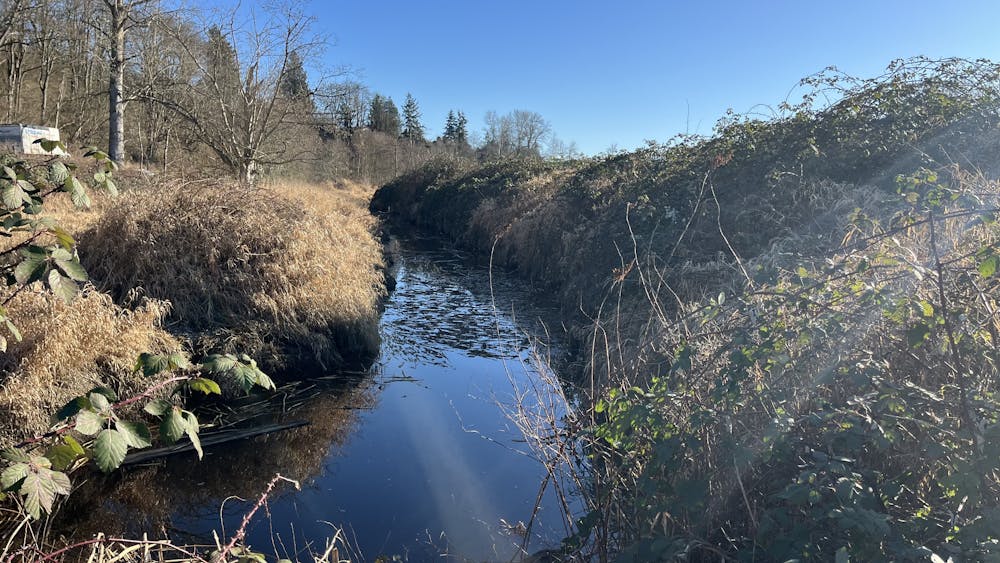The Northwest Clean Air Agency (NWCAA) is requesting proposals for projects promoting community climate resilience. A $3.5 million pool will be used to support up to three projects selected by the organization.
This request for proposals (RFP) was made possible by the $4 million settlement won by NWCAA from Petrogas LLC in 2023. Petrogas, without permit, undertook projects from 2015 through 2020, which led to an annual increase in hundreds of tons of emissions, primarily propane.
NWCAA is responsible for enforcing regulations on stationary air pollution sources and monitors live air quality information for all to access. The organization covers Island, Whatcom and Skagit counties, and will be serving San Juan County by July.
What does this mean?
The RFP seeks projects meant to promote community climate resilience or reduce greenhouse gas emissions, but the language of the request is open-ended. A project must provide “clear, tangible, positive benefit” for communities within NWCAA’s jurisdiction, according to a presentation from NWCAA’s pre-bid meeting on Jan. 24.
NWCAA sent the RFP to a range of organizations in its jurisdiction, including cities, counties, native tribes, utilities and non-profits, according to Seth Preston, the communications program manager for the NWCAA. These organizations are expected to submit their proposals by Feb. 21.
Why is this needed?
Severe climate events are increasing in frequency as climate change progresses. In Washington State, flooding and wildfires are the most frequent and severe environmental disasters.
According to the Washington Forest Protection Association, more than half of Washington’s land is forested. In Whatcom County, that figure is closer to two-thirds. Predicted shifts in temperature and rainfall will make these forests more prone to wildfire.
“We get wildfire smoke from basically all around. It comes down out of Canada. It comes from eastern Washington. It comes from California and Oregon, sometimes even Idaho,” Preston said. “There have been times when the air quality in parts of our jurisdiction was among the worst in the world.”
Flooding, being Washington’s most common natural disaster, is also a concern for the future, according to Curt Hart, communications manager for Washington's Department of Ecology. All of Washington’s counties have received presidential disaster declarations from floods since 1970, according to the department’s website.
Salmon, drinking water and existing infrastructure are also threatened by the changing climate, according to Colin Hume, a planner at the Washington Department of Ecology and the Puget Sound Recovery Lead in its Shorelands and Environmental Assistance Program. The program provides grants to restore and promote resilience in riverbank and shoreline ecosystems.
The program prioritizes shared benefits between ecological and human interests, reflecting a wider initiative to develop mutualistic projects taken by the state, according to Hume.
“We’re in a phase of learning how to approach these types of projects from what we call a multi-benefit aspect,” Hume said.

A culvert outlet that leads to a one-way tide gate in Swans Trail Slough in Snohomish, Wash., on Jan. 31, 2025. Both features could be removed in an upcoming project by the Snohomish Conservation District. // Photo by Steven Colson
What does a climate resiliency project look like?
The Snohomish Conservation District in Snohomish County received $2 million toward a project in Swans Trail Slough. The project aims to improve drainage, reduce flooding and create fish habitat.
Core to the project is the removal of a one-way tide gate that drains the slough, according to Dean Pakinas, a supervisor of Drainage Improvement District 13 and a farmer of Swans Trail Farms. The tide gate and culverts within the slough restrict the free movement of fish.
In a rain event, all of the rainfall flows from a hill into the slough, which threatens Pakinas’ family’s adjacent farm. A few years ago, a severe rainstorm flooded the farm.
“In June of that year, we lost 30 acres of pumpkins,” Pakinas said.
Pakinas’ property will be altered by the project, but the result will benefit both the farm and the slough’s health, which Pakinas is in support of.
“I’m a Christian, so I believe that we are put here to steward this planet,” Pakinas said. “That means to cultivate and steward it for future generations. Not to destroy it, but to make it better.”
This project could provide an answer to the threat of flooding in the long-term, while at the same time opening the door to fish in the area, Pakinas said.
Moving forward
This RFP is new territory for NWCAA, and the $4 million in settlement money provides an opportunity NWCAA does not want to waste, Preston said. NWCAA has spent two years preparing this RFP: meeting with its advisors, board and a hired consultant for ideas and to ensure it is implemented effectively.
The pre-bid meeting for the RFP had about 25 people attending, with two representing the City of Bellingham, according to Preston.
“This is a fascinating opportunity for us to make an impact, and to help other people address issues that their communities face,” said Preston.
Steven Colson (they/them) is a city news reporter for The Front. They are a fourth-year environmental journalism major. Beyond the newsroom they like to be outside with the stars, trees and water, or in busy spaces jumping to loud music. You can reach them at stevencolson.thefront@gmail.com






